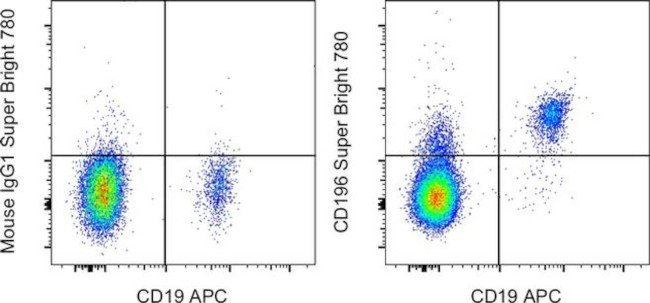Search
Invitrogen
CD196 (CCR6) Monoclonal Antibody (R6H1), Super Bright™ 780, eBioscience™
{{$productOrderCtrl.translations['antibody.pdp.commerceCard.promotion.promotions']}}
{{$productOrderCtrl.translations['antibody.pdp.commerceCard.promotion.viewpromo']}}
{{$productOrderCtrl.translations['antibody.pdp.commerceCard.promotion.promocode']}}: {{promo.promoCode}} {{promo.promoTitle}} {{promo.promoDescription}}. {{$productOrderCtrl.translations['antibody.pdp.commerceCard.promotion.learnmore']}}
图: 1 / 5
CD196 (CCR6) Antibody (78-1969-42) in Flow

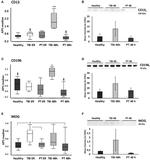
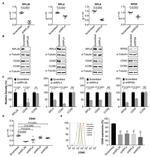
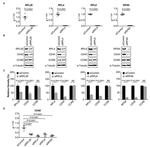
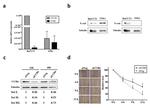
产品信息
78-1969-42
种属反应
宿主/亚型
分类
类型
克隆号
偶联物
激发/发射光谱
形式
浓度
纯化类型
保存液
内含物
保存条件
运输条件
RRID
产品详细信息
Description: This R6H1 monoclonal antibody reacts with CD196 (also known as CCR6), a seven transmembrane G protein-coupled receptor expressed on T, B, dendritic, natural killer, and Langerhans cells. This CC chemokine receptor uniquely binds MIP-3a/CCL20, a chemoattractant for dendritic cells, effector/memory T cells, and B cells. CD196 is also involved in host defense and inflammation at epithelial sites. Furthermore, this receptor has been implicated in Th17 differentiation and CD4+FoxP3+ regulatory T cell development.
Applications Reported: This R6H1 antibody has been reported for use in flow cytometric analysis.
Applications Tested: This R6H1 antibody has been pre-diluted and tested by flow cytometric analysis of normal human peripheral blood cells. This may be used at 5 µL (0.5 µg) per test. A test is defined as the amount (µg) of antibody that will stain a cell sample in a final volume of 100 µL. Cell number should be determined empirically but can range from 10^5 to 10^8 cells/test.
Super Bright 780 is a tandem dye that can be excited with the violet laser line (405 nm) and emits at 780 nm. We recommend using a 780/60 bandpass filter. Please make sure that your instrument is capable of detecting this fluorochrome.
When using two or more Super Bright dye-conjugated antibodies in a staining panel, it is recommended to use Super Bright Complete Staining Buffer (Product # SB-4401) to minimize any non-specific polymer interactions. Please refer to the datasheet for Super Bright Staining Buffer for more information.
In some experiments, we have observed that compensation values for Super Bright 780-conjugated antibodies are higher in the violet 450/50 channel when using UltraComp eBeads microspheres (Product # 01-2222-42) as compared to single-color stained cells. In such circumstances, we would recommend setting compensation with cells. We have also observed this in some experiments using AbC Total Antibody Compensation beads (Product # A10497).
Light sensitivity: This tandem dye is sensitive to photo-induced oxidation. Please protect this vial and stained samples from light.
Fixation: Samples can be stored in IC Fixation Buffer (Product # 00-8222) (100 µL of cell sample + 100 µL of IC Fixation Buffer) or 1-step Fix/Lyse Solution (Product # 00-5333) for up to 3 days in the dark at 4°C with minimal impact on brightness and FRET efficiency/compensation. Some generalizations regarding fluorophore performance after fixation can be made, but clone specific performance should be determined empirically.
Excitation: 405 nm; Emission: 780 nm; Laser: Violet Laser
Super Bright Polymer Dyes are sold under license from Becton, Dickinson and Company.
靶标信息
CD196, also known as CCR6, is a member of the beta chemokine receptor family and is characterized by a seven transmembrane structure similar to G protein-coupled receptors. This receptor uniquely binds to macrophage inflammatory protein 3 alpha (MIP-3alpha/CCL20), which acts as a chemoattractant for dendritic cells, effector/memory T cells, and B cells. CCR6 is preferentially expressed by immature dendritic cells and memory T cells, playing a crucial role in host defense and inflammation at epithelial sites. It is important for B-lineage maturation and antigen-driven B-cell differentiation, and it regulates the migration and recruitment of dendritic and T cells during inflammatory and immunological responses. Additionally, CCR6 has been implicated in the differentiation of Th17 cells and the development of CD4+FoxP3+ regulatory T cells, highlighting its role in immune regulation. Alternatively spliced transcript variants encoding the same protein have been described for this gene, further emphasizing its functional diversity in immune processes.
仅用于科研。不用于诊断过程。未经明确授权不得转售。
How to use the Panel Builder
Watch the video to learn how to use the Invitrogen Flow Cytometry Panel Builder to build your next flow cytometry panel in 5 easy steps.
生物信息学
蛋白别名: C-C chemokine receptor type 6; C-C CKR-6; CD196; chemokine (C-C motif) receptor 6; chemokine (C-C) receptor 6; Chemokine receptor-like 3; CKR-L3; CKR6; DRY-6; DRY6; G protein-coupled receptor 29; G-protein coupled receptor 29; GPR-CY4; GPRCY4; LARC receptor; seven-transmembrane receptor, lymphocyte, 22
基因别名: BN-1; C-C CKR-6; CC-CKR-6; CCR-6; CCR6; CD196; CKR-L3; CKRL3; CMKBR6; DCR2; DRY6; GPR29; GPRCY4; STRL22
UniProt ID: (Human) P51684
Entrez Gene ID: (Human) 1235

